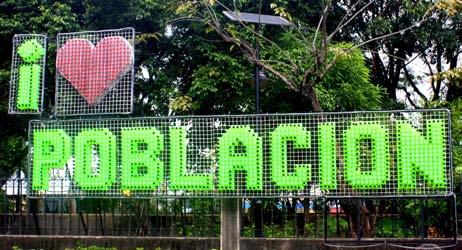
3 minute read
Mayon sustains slow lava flow, but rains ‘could worsen risks’
By Rio N. Araja, Maricel V. Cruz and Vince Lopez
THE Philippine Institute of Volcanology and Seismology (Phivolcs) on Thursday said the lava flow in Mayon Volcano, Albay lava had cascaded down the slopes by about two kilometers from crater.
This developed as Albay Rep. Joey Sarte Salceda expressed apprehensions that the general situation around the volcano could be worsened by heavy rains in the coming days.
Meanwhile, the Philippine dispatched one of its biggest ships to deliver “critical relief goods” to Albay.
The very slow effusion of lava flow along Mi-isi gully lengthened from 1.6 kilometers (kms) on Wednesday to 2.1 kms on Thursday, the Phivolcs reported. The lava flow along Bonga gully also extended from 1.2 kms to 1.3 kms, the agency added.
The moderate emission of plumes from the volcano reached as high as 1,000 meters, drifting to west-northwest, northnorthwest, and northeast directions, the Phivolcs said.
“Alert Level 3 is maintained over Mayon Volcano, which means that it is currently in a relatively high level of unrest as magma is at the crater and hazardous eruption within weeks or even days is possible,” the Phivolcs bulletin stated.
PCG to end search-rescue ops for 6 missing crews of sunken fishing boat
THE Philippine coast guard said Thursday it would end a week-long search for six missing crew members of a fishing boat that sank in bad weather in the country’s eastern waters.
The Genesis 2 sank 337 kilometers (209 miles) east of the southern island of Mindanao on June 22. Fourteen crew members were rescued and the bodies of three others were recovered, said local coast guard official Lieutenant Junior Grade Elmar Mesina.
“There’s only a low possibility of locating more survivors,” said Mesina, the coast guard station chief in Davao Oriental province, when asked by AFP if the six were presumed dead.
The coast guard’s head office in Manila announced Thursday that it had recommended to its commander to “terminate” the search.
It quoted the rescued crew members as saying the six men, including the captain, might have been trapped inside the vessel, which sank amid big waves in an area where the seafloor was about 1,500 meters (5,000 feet) deep.
The PCG deployed the BRP Tubbataha (MRRV-4401) to respond to a maritime incident involving a F/B Genesis 2 that sank last June 22.
The survivors recalled that they encountered a sudden change in sea conditions at around 12 midnight, causing their fishing boat to sink an hour later.
Based on the crew manifest, F/B Genesis 2 had 23 crewmembers at the time of the accident.
A coast guard patrol vessel left the area on Wednesday after conducting the search, Mesina said.
The cause of the accident is under investigation. Vince Lopez, AFP
“It is therefore recommended that the 6-km radius permanent danger zone (PDZ) be evacuated due to the danger of PDCs, lava flows, rockfalls, and other volcanic hazards,” it said.
Phivolcs said there was a total of 296 rockfall events, seven dome-collapse pyroclastic density current (PDCs) events, and two lava front collapse pyroclastic density current events over Mayon Volcano.

Salceda feared that heavier rainfall “could exacerbate risks in Mayon, and will force us to evacuate communities in near lahar channels, in addition to the ones already in danger zones.”
Salceda, chair of the House committee on ways and means, was reacting to projections by the Philippine Atmospheric, Geophysical, and Astronomical Services Administration (PAGASA) that three to four cyclones were likely to hit the country in July.
Thus, Salceda said, “we respectfully request President Marcos’s continued support for Albay, and we thank him for the unwavering help he has already provided us.”
“In July, the average rainfall in Albay was expected to be 155.2mm, and 112.53mm for the rest of the year with about 38 percent more rains. And, if the PAGASA projection takes place, we could see more. That compounds the risks Mayon poses,” Salceda said.
He added that “although, we might not need to evacuate those near lahar channels but are outside the designated 6-, 7-, or 8-kilometer danger zones for long periods, we might need to bring them to safety when a storm is impending, or there is heavy rain.”
“So, really what we are looking at is extended evacuation for those in danger zones, and intermittent evacuations for those in lahar channels during heavy rain. We will really need help,” he added.







